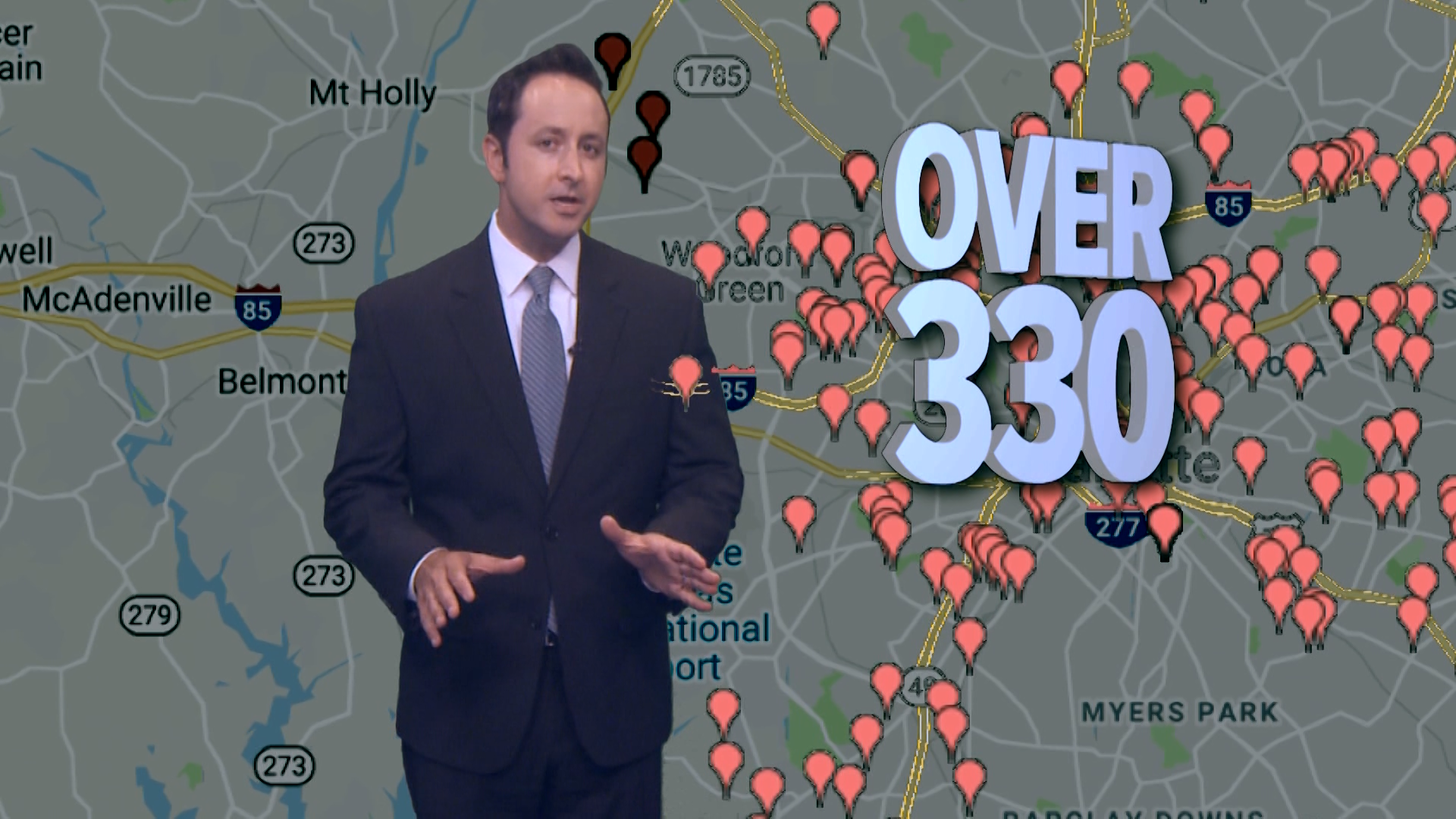CHARLOTTE, N.C. — A first of its kind look at Charlotte's deadly violence shows a more than 30-square-mile, heavily populated section of the city that has remained untouched by homicides over the last four-and-a-half years.
Charlotte-Mecklenburg Police Department records identifying the victims, dates and locations of more than 330 homicides since 2015 show officers have not responded to a single homicide in Myers Park, Barclay Downs and the surrounding areas.
In contrast, CMPD has investigated homicides in most other sections of the city over that same timeframe, according to records obtained by NBC Charlotte.
"Where the homicides are located isn't surprising," Winthrop University Sociology and Criminology Professor Dr. Ty Miller said.
Dr. Miller said crime generally tends to occur where there is a lot of strain and a lot of people who come and go regularly.
"It appears as if they're really clustered around these neighborhoods that are low socio-economic status, low income, high social disorganization neighborhoods," he said.
Dr. Miller said there is a real lesson Charlotte can learn from studying the data. He said not only is it important for the city to invest financially in those areas, but members of the community need to invest emotionally.
"There's a lack of social control in those neighborhoods," he said. "Whenever there is a lot of collective efficacy, that's when people have a lot of shared values, shared responsibilities and they really all value the same things, a lot of times, that's crime inhibiting."
The high concentration of murders in parts of a city but not other parts is not unique to Charlotte. It's found in cities like St. Louis and Chicago too. Dr. Miller said the more violent areas need more informal social control. He said it comes down to communities holding each other accountable and controlling each other's behaviors.
"It's not so much, 'I'm scared that the police are going to get involved, but I don't want my neighbors to get upset or I don't want to victimize my neighbors,'" he said. "If you don't have that connection and those relationships and you don't value those relationships, you're going to see crime increase in those areas. Having these neighborhood values, collective values are really what curtails crime in specific areas."
That's easier said than done. It takes time, leadership and money.
New York University Sociology Professor Patrick Sharkey helped start AmericanViolence.org. The website maps crime data so public officials, journalists, researchers and others can observe and analyze trends. He said research shows communities with violence need new investment.
"The very broad argument is that these are places that have been abandoned," Sharkey said. "Violence emerges when basic investment in public spaces is withdrawn. When investments are withdrawn, places start to become abandoned, then areas are in danger of becoming outside the informal control of resident and police and community groups."
He also said it is critical that mentors step up.
"(The solution is) in investment in the community organizations," he said. "When these organizations are strong, when they have stable investments, when they are large in number and work closely with police and the city, then that's what makes a community strong."
That sense of community is why Zoey Rothwell loves where she lives. It's an area that CMPD records show, while not completely crime-free, continues to be immune from homicides.
"I've always felt safe here," she said. "There's not been a lot of violence, but to actually see it on a map and see all of the bad things happening around us, that's just crazy."
As the number of murders keeps going up in 2019 and community leaders keep suggesting ways the city should respond, homicide data show several areas of Charlotte that need attention.
More crime stories from WCNC.com:

